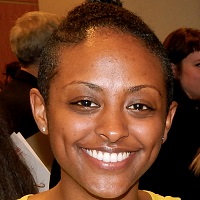 Three Ways the Arts are Advancing Equity in NYC
Three Ways the Arts are Advancing Equity in NYC
By Salem Tsegaye, Program Associate, New York Community Trust
You’ve heard it time and again: New York City is morphing into a tale of two cities.
The inequities we see in housing, health, labor, and education are mirrored in the city’s cultural sector. Culture is a way of life, and creative expression is part and parcel of culture. If these inequities are not isolated, why are our strategies for addressing them?
Over the last few months, the New York City Cultural Agenda Fund has been sharing progress from its workshops series with arts advocates. We’ve addressed topics like racial justice leadership, communications framing and messaging, and design thinking, to help bolster arts advocacy and improve equity in the City’s cultural sector.
Now, to wrap up: How does cross-sector collaboration benefit arts and culture? How can arts and culture help sustain a vibrant, more equitable New York?
In 2015, the Fund made a grant to Hester Street Collaborative, a group well-versed in participatory planning and design processes. They led a workshop to help arts advocates:
- Understand the broader role of arts, culture, and creativity in shaping and sustaining neighborhoods;
- Gain exposure to citywide efforts and initiatives; and
- Identify opportunities for arts-integrated partnerships.
Participants explored the big issues affecting their communities—the artists or audiences they serve, or the neighborhoods in which they’re situated. It’s probably no surprise: The most pressing issues have to do with affordability, like gentrification, displacement, and widening disparities in income. For arts advocates, inequitable development poses a serious threat to community vitality, cultural preservation, and an already eroding artist-supportive climate.
Equally important, unaffordability threatens New Yorkers’ access to health care, housing, education, green space, food, and more. These are urgent issues.
Facilitators shared inspiring examples of creative placemaking projects (described here by our ArtPlace America colleagues), and led discussions about topics tied to citywide development, such as parks and open spaces, public housing, and rezoning. Advocates imagined how creative practices, like art-making and design, might contribute to progress in other realms, like preserving cultural diversity, promoting educational attainment, and fostering good health. They also imagined how arts and culture could benefit from branching out.
The New York City Cultural Agenda Fund awarded planning grants (scroll halfway down the page) to help some groups develop their ideas into actionable, collaborative projects. Half of these projects go beyond arts and culture:
- El Puente is working with six other groups including Hester Street Collaborative to create a blueprint for integrating arts and culture into neighborhood planning. This was both a timely and critical policy priority—the City is leading a number of rezoning initiatives to accommodate Mayor De Blasio’s 10-year plan to build new affordable housing units.
- People’s Climate Arts, Arts & Democracy, and The Laundromat Project are planning programs that teach artists how to use creative strategies to advance social movements. These groups have experience connecting artists to their local communities, city policies, and grassroots campaigns in labor rights, environmental justice, immigration, and more.
- Naturally Occurring Cultural Districts New York is working with nine other groups to find ways to integrate arts and culture into public housing communities. Previous work with public housing residents, housing activists, and city officials revealed that arts and culture helps marginalized communities counter trauma, break down isolation, spur creativity and freedom of expression, and find paths into education and job training.
By late summer, these groups (among other Fund grantees) will have completed their planning, and the Fund will have made grants to get the work started. We look forward to sharing updates then. In the meantime, we hope you’re encouraged by these developing partnerships. We certainly are.
